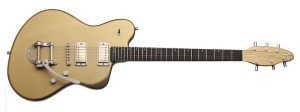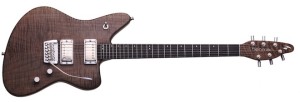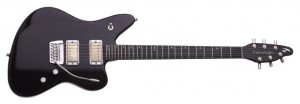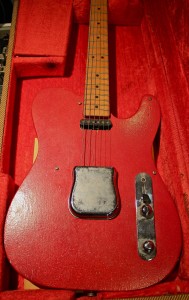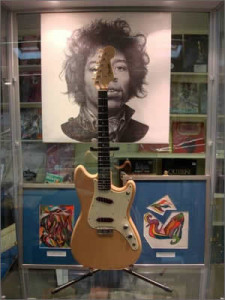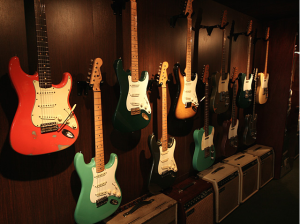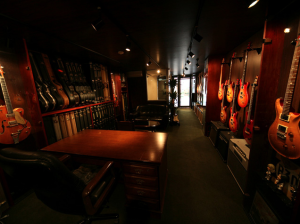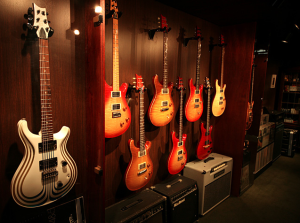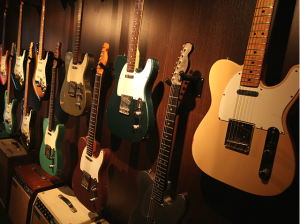When it comes to vintage and rare instruments in the Netherlands, Palm Guitars is one of the most well-known dealers. The owner, Soren Venema, has been in the business of fine and collectible vintage instruments for 35 years. His website www.palmguitars.nl has many amazing instruments from all over the world. Whether it’s an old Fender Stratocaster, a Greek Bouzouki, or an Uzbhek Tar, it can be found at Palm Guitars. Let’s meet, Soren, one of vintage musical instruments premiere dealers.
V&R: Hello Soren, thank you for taking the time for this interview. Before we discuss the range of your products and collections in more detail, can you please give our readers the history of Palm Guitars? When did Palm Guitars become an idea? Can you tell us how it all started?
Soren: Palm Guitars started in 1976, on Waterlooplein , the famous flea-market in Amsterdam, with 50 euros and half a cowhide, making belts and other leather goods by hand. Then we slowly moved into antiques and ethnographical items and musical instruments. After spending 10 years in England buying and selling, Palm Guitars moved back to Amsterdam. We ran a musical instrument auction for a few years doing cataloguing and valueing all musical instruments. Then in 1995 Palm Guitars at its present location opened its doors.
V&R: That’s fascinating. So what was your first instrument sale back then, if you can recall?
Soren: It was an old Greek Lautas–a type of bouzouki from Macedonia.
V&R: An old Greek bouzouki? That’s very cool. Do you guys offer any artist appearances and clinics within Palm Guitars?
Soren: I have done clinics and concerts with some of the National Reso/Phonic players such as Bob Brozman, Catfish Keith,and many others , as well as ethnic concerts with players from Siberia, India , Serbia and so on.
V&R:What is the main focus in your business? Does Palm Guitars focus on selling vintage instruments only?
Soren: I am also importing a few brands, such as National Reso/Phonic guitars, Goldtone banjos as well as having my own brand “Palmstrings”, which include resonator Django Selmer type guitars…….
V&R: Do you offer private lessons in Palm Guitars?
Soren: I give one lesson with every instrument I sell.
V&R: So where did you get your enthusiasm and passion? Are there any exciting stories you would like to share with us?
Soren: Having a shop is my way of interacting with the world, and meeting known and unknown musicians can be a bonus.
V&R: Does Palm Guitars export instruments to every corner of the world? Or is it more of a regional kind of store for locals?
Soren: A lot of business goes all over the world through the website, in fact probably a greater part than what sells locally.
V&R:We have noticed that you aim to keep your prices as fair as possible, for any musician to experience a vintage instrument. Do you feel that this has been a great asset for business?
Soren: It was a long time ago when people decided themselves what something was worth, but nowadays everybody has internet and so prices have become more standardized. Price Guides can be of help but are of course not always dependable.
Thanks again for taking the time to answer the questions and share your experience with us.
———————————————————————————————-
If you want to contact Palm Guitars here is some information for you:
Palm Guitars specializes in buying, selling and repairing used and antique musical instruments, western as well as ethnic.
The adresse is:
s’Gravelandse Veer 5bg 1011 KM Amsterdam The Netherlands
And they are open: wednesday-saturday 12-18 Phone:+31 (0)20 422 0445
E-mail: palmgtr(@)xs4all.nl

